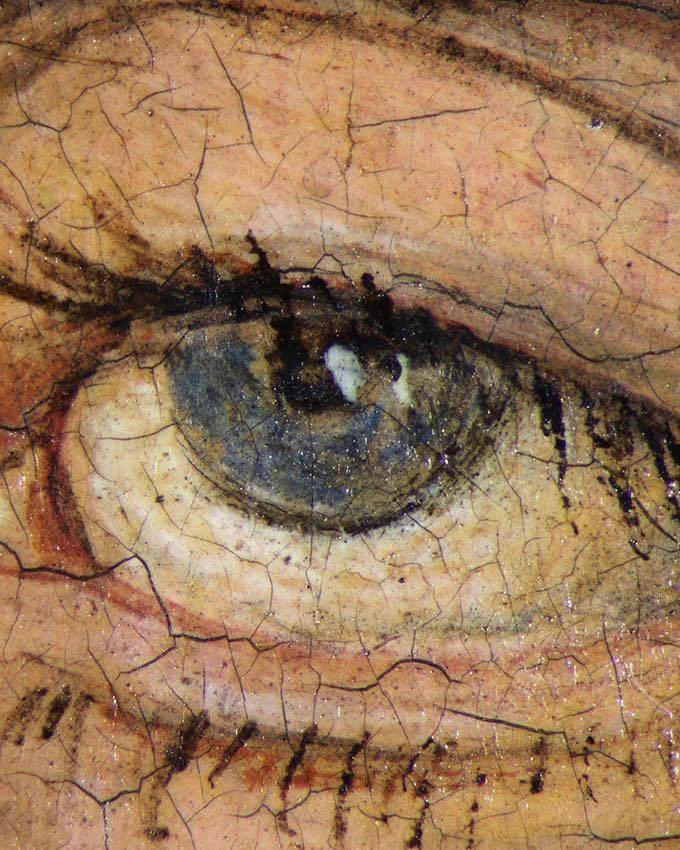Something lovely for the weekend! A 1,800 year-old Roman cobalt blue glass flask shaped like a little mouse. 📷 my own #Archaeology#
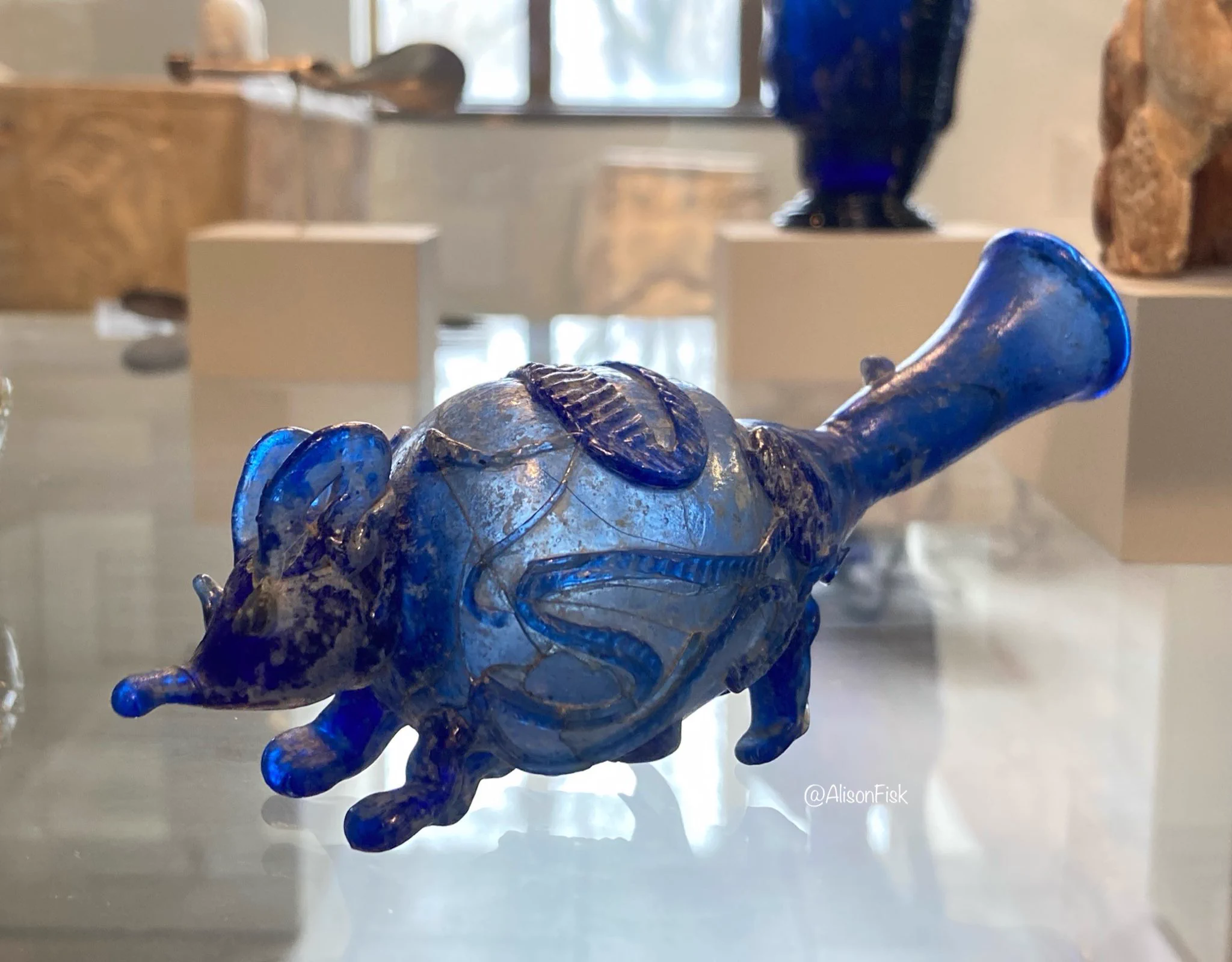
A surreal drawing of a tortoise flying above a Venetian cityscape, created by Melchior Lorck in 1555.
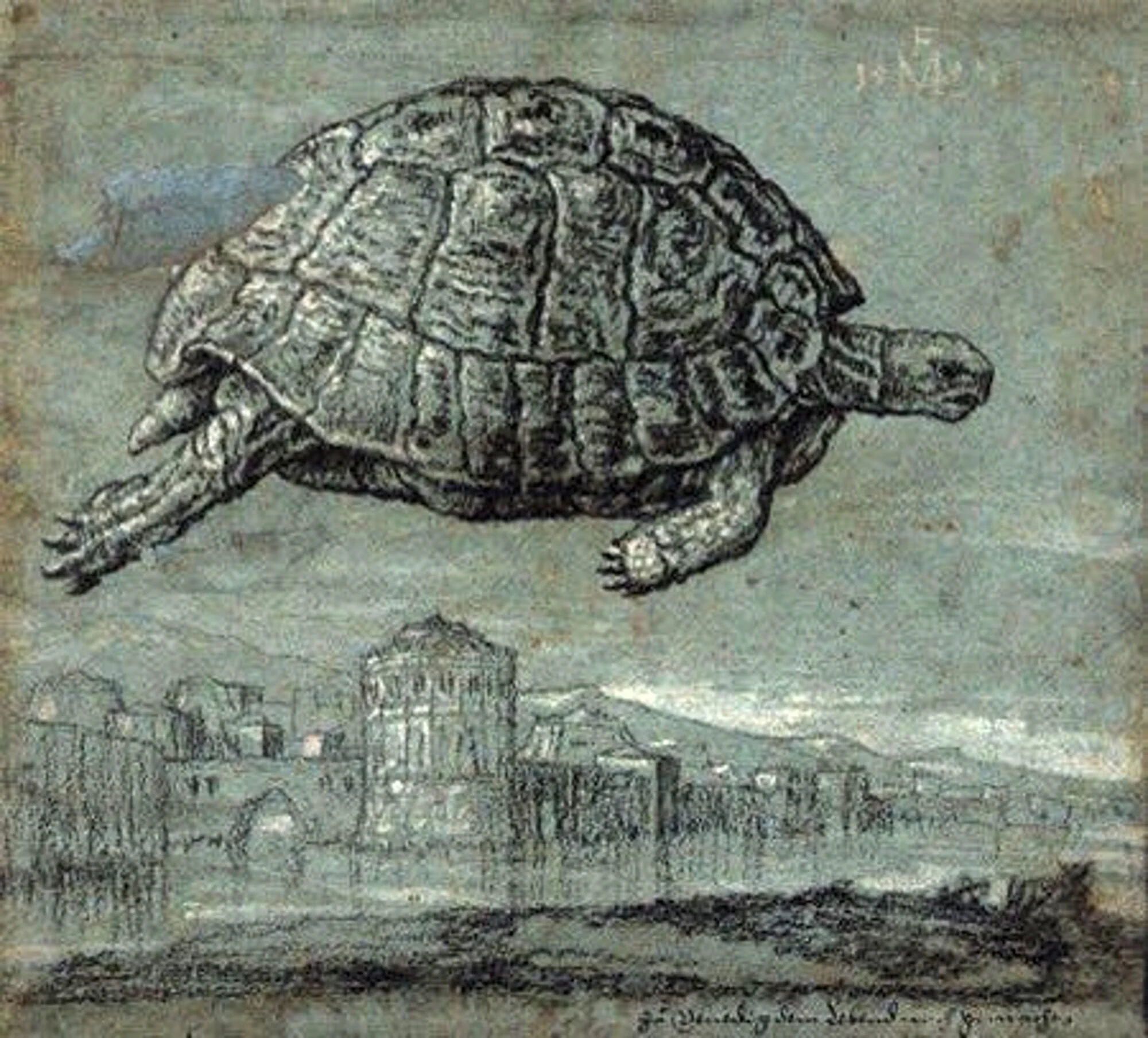
"Death and the Maiden" is a boxwood medallion carved by Hans Schwarz in 1520. Currently on display at the Bode Museum in Berlin. The motif of "Death and the Maiden" has its origins in late medieval and Renaissance art. This theme was particularly relevant during times of plague and war, when death was a constant presence.
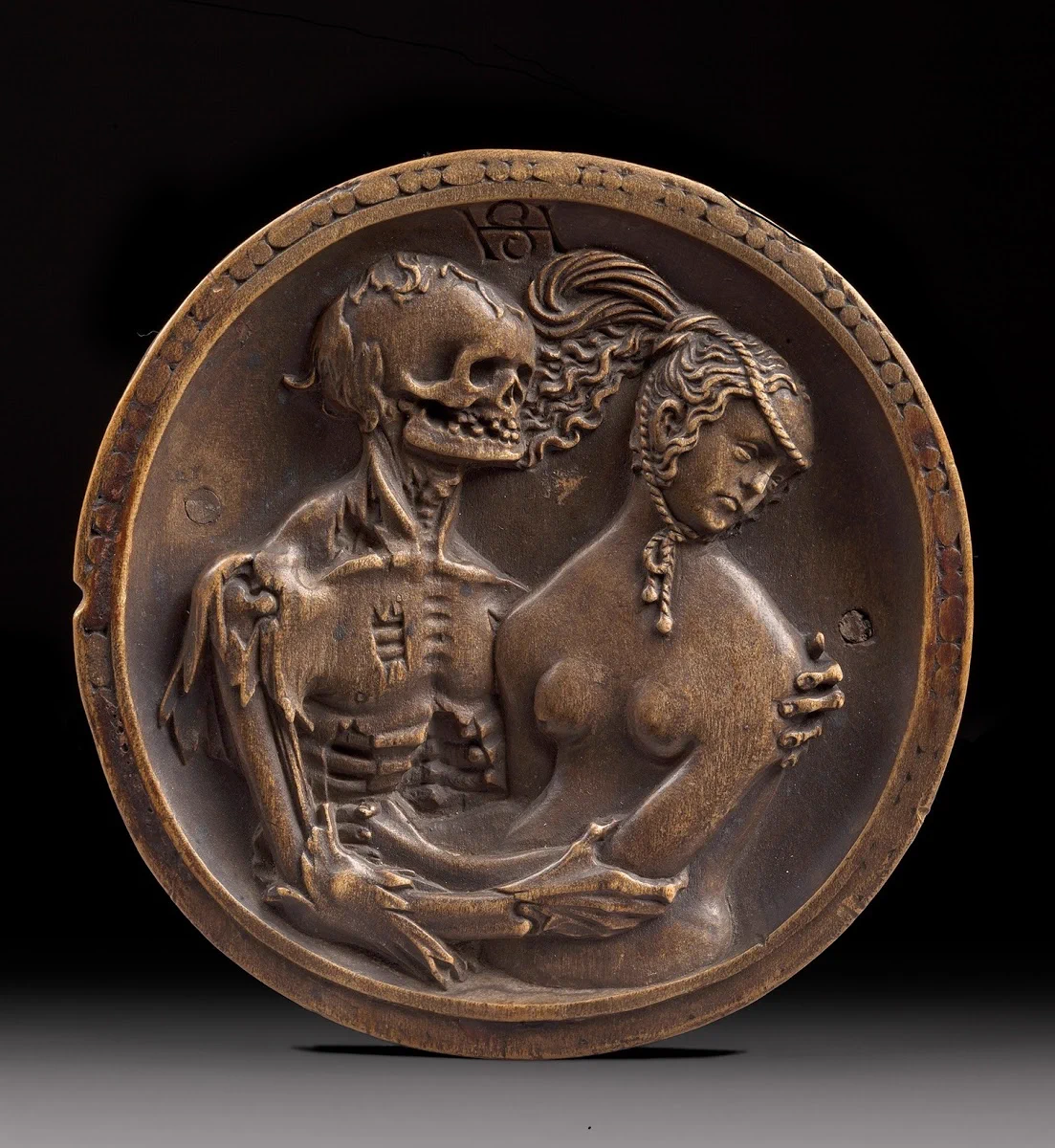
“A wicker man, filled with human sacrifices, waiting to be burned. The wicker man ritual was described by Julius Caesar in Book Six of The Gallic War, in which he describes the customs of the Celts of Gaul.” Aylett Sammes, 1676.
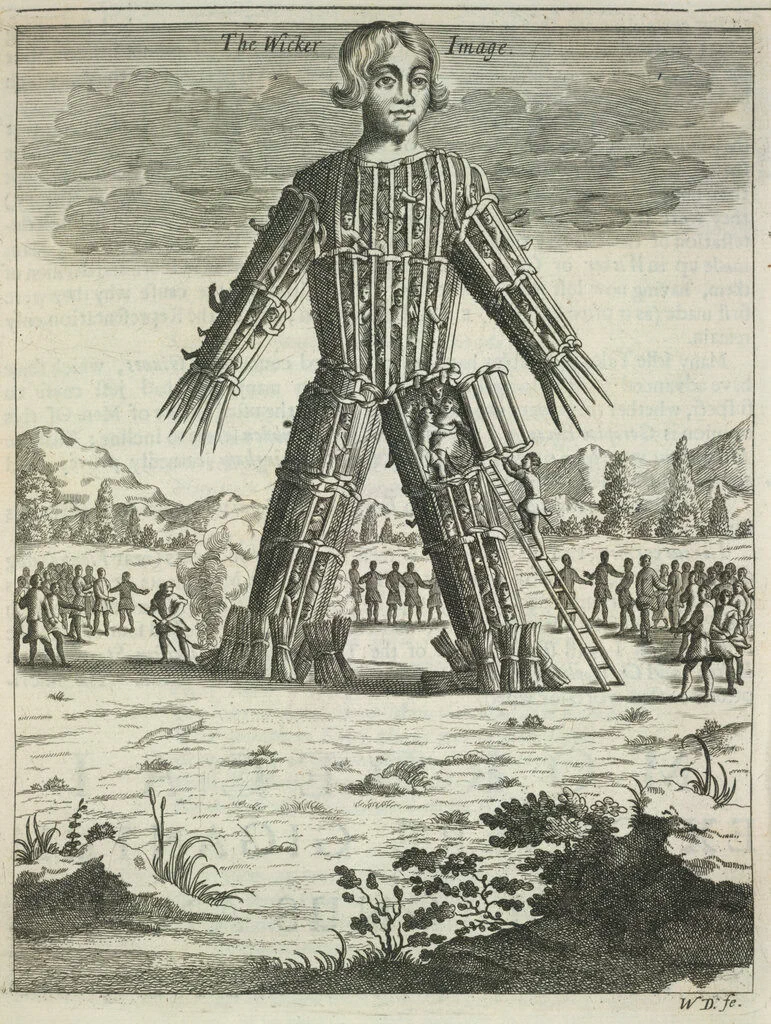
A vintage folding knife from approximately 1919. The blade features an inscription: "No One Else Has Your Part." The handle is ornately designed, depicting the figure of the Virgin Mary, crowned and holding her hands in a gesture of prayer
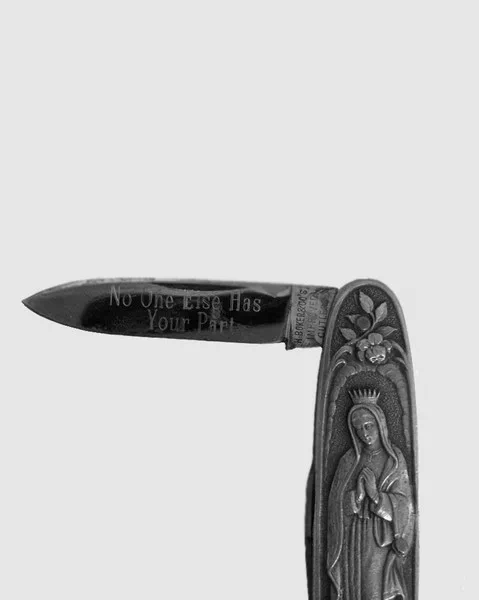
Carving of a wasp's nest. Japan, Edo period, 1800-1850
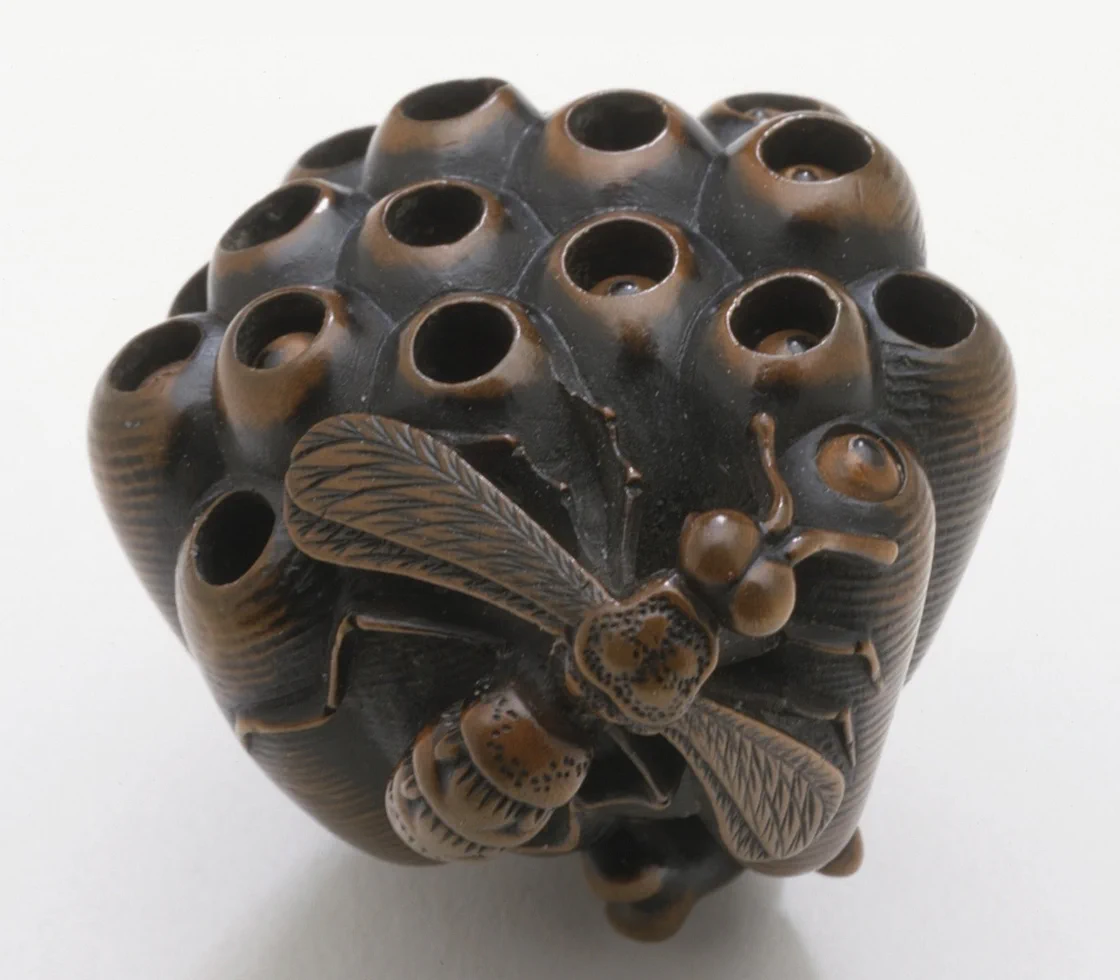
Statue of a Young Satyr Wearing a Theater Mask of Silenos, ca. 1st century AD. Anonymous sculptor, with 1628 restorations by Alessandro Algardi. Collection of the Art Institute of Chicago. The satyr and Silenos are key figures in Greek mythology, particularly in their association with Dionysian festivities, which were marked by wild celebrations and theatrical performances. Satyrs, often represented as half-human, half-goat creatures, embodied the untamed forces of nature, while Silenos, their leader, was considered wiser, albeit prone to indulgence.
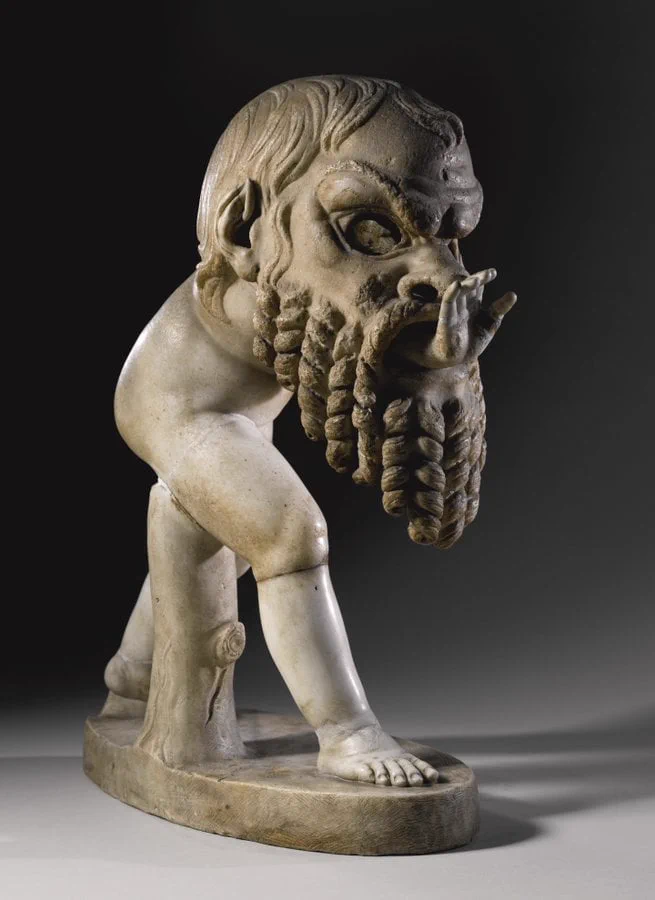
A 5,000-year-old 'spider stone' found in the island of Bornholm in Denmark. Collection: Bornholm Museum
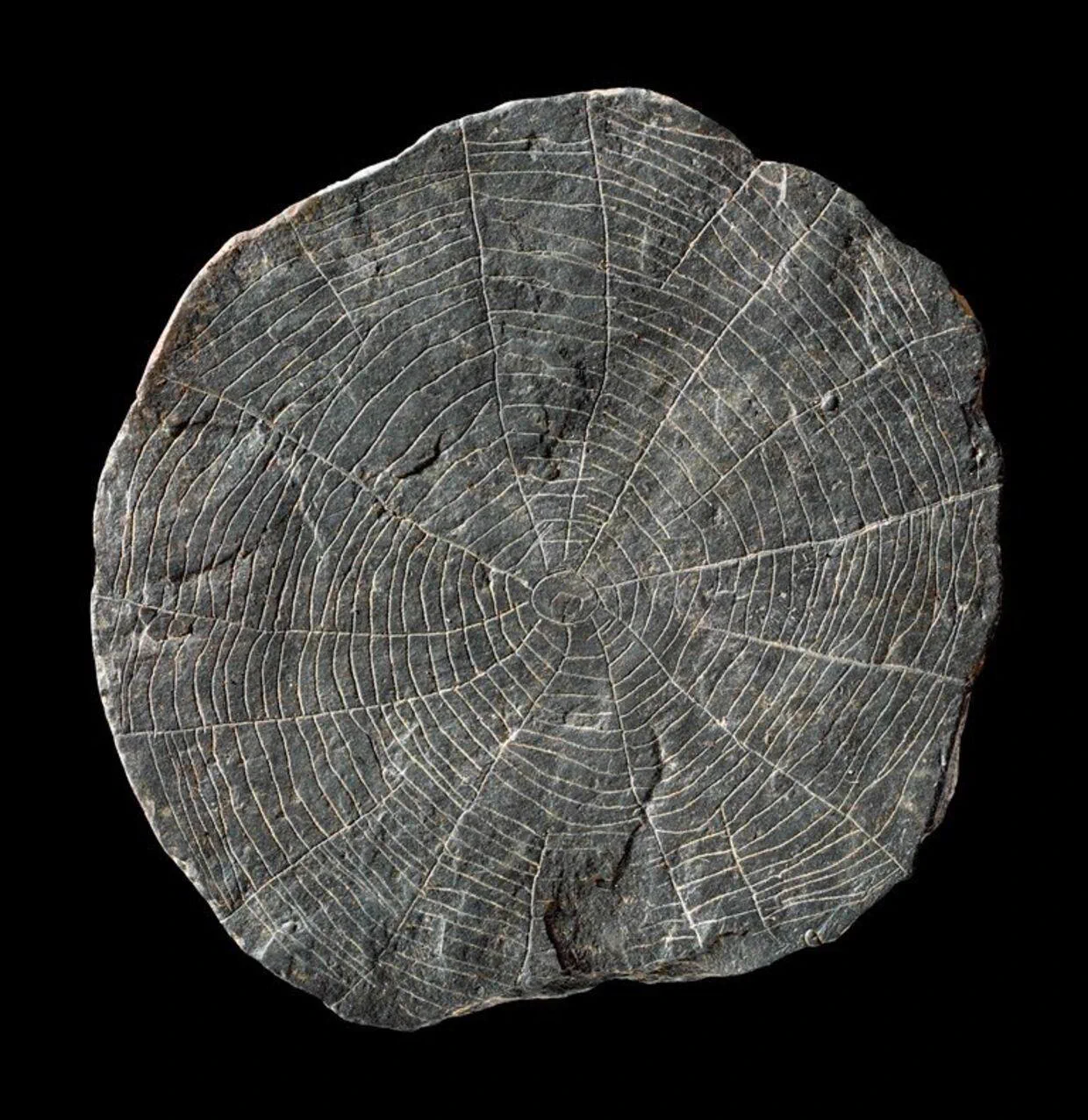
Cuneiform tablet inscribed with a Sumerian dedicatory text from Ekur, the temple of the god Enlil, dated to around the 16th–15th century BC.
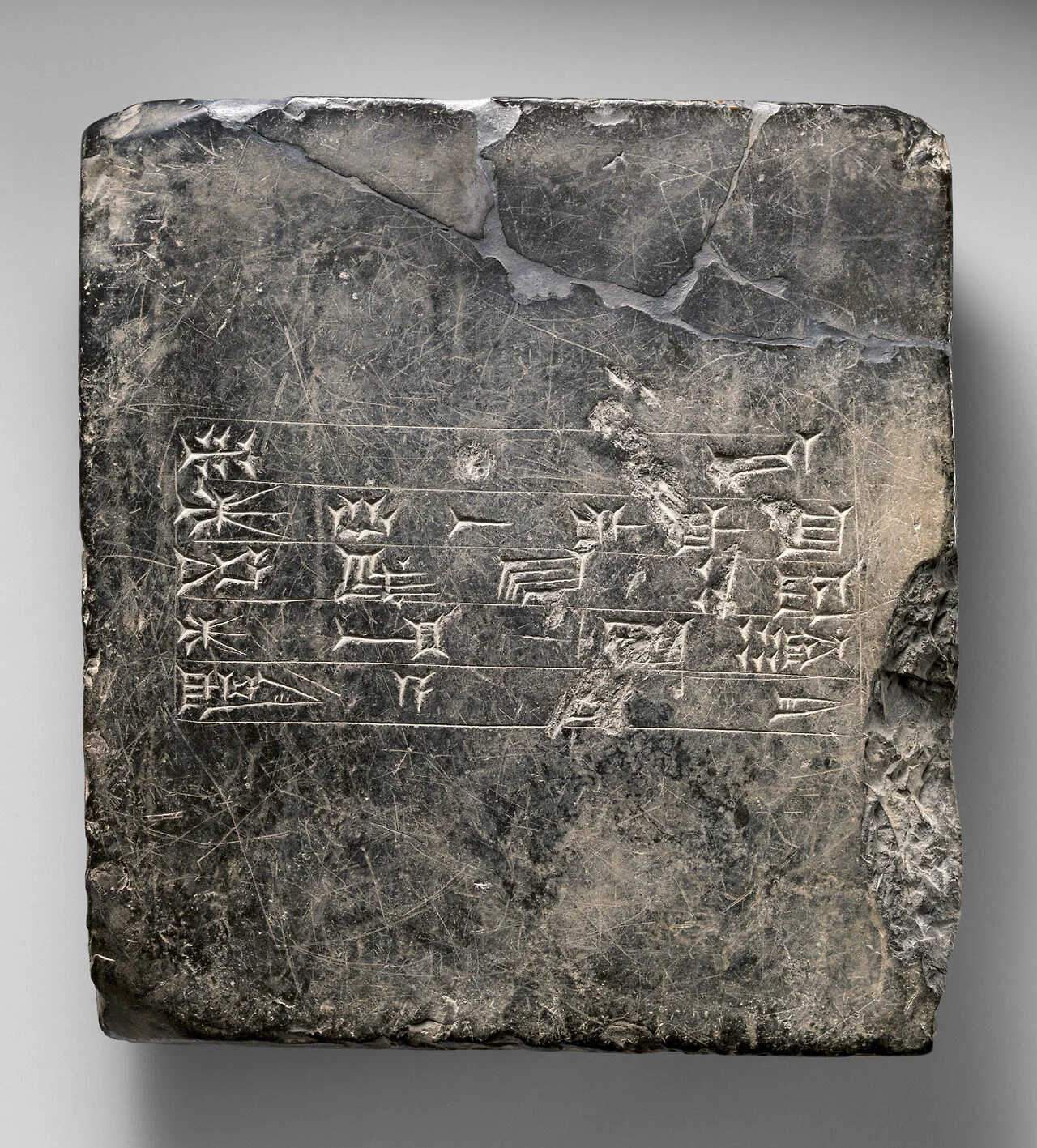
Art Deco perfume bottle by Turriet & Bardach, made in Czechia circa 1930.

A grotesque depiction of a devil emerging from the jaws of Hell, illustrated in a Bible moralisée from the 15th century.

Ancient and beautiful engraved amber pendants worn by hunter-gatherers some 10,000 years ago. Mesolithic period. 📷 National Museum of Denmark #Archaeology#

Woman's Path Through History Over 10,000 Years Ago - a woman or young man carried a toddler across a muddy terrain in present-day White Sands National Park, New Mexico... These ancient footprints offer scientists a remarkable glimpse into the past. This revelation is courtesy of the National Park Service and Bournemouth University. The prehistoric traveler embarked on a journey carrying a child, returning alone hours later. In an arduous trek more than 10,000 years ago, a woman or a young man with a toddler balanced on one hip trudged northward through what is now White Sands National Park in New Mexico. Facing potential rain and slippery mud, the traveler briefly set the child down before continuing. Along the way, a woolly mammoth and giant sloth crossed their path. Hours later, the traveler retraced their steps south, now without the child. Scientists have documented nearly a mile of these fossilized footprints—the longest human trackway of its age ever found. “I’ve never seen anything quite like it,” says evolutionary biologist Kevin Hatala from Chatham University, who was not involved in the study. This trackway, featuring over 400 human prints including tiny child prints, is detailed in a new study published in Quaternary Science Reviews. By examining the footprints' shape, structure, and distribution, researchers revealed an intimate portrait of this ancient journey, capturing even the traveler’s toes slipping on the wet surface. Meticulous Excavation of Footprints Scientists carefully unearthed these delicate footprints, documenting them in three dimensions before they could deteriorate. The tracks also revealed a mammoth and a giant sloth traversing the area after the humans passed. While the mammoth appeared indifferent to the human presence, the sloth likely sensed it, rearing up as modern bears do to detect scents. “This gives us insight into humans within their ancient ecosystem,” explains study author Sally Reynolds, a paleontologist at Bournemouth University, noting the sloth’s awareness of nearby humans—an insight not gleanable from bones alone. The 'Ghost Tracks' Fossil footprints provide stunning snapshots of ancient behaviors, preserving moments in time unlike any other remains. “Footprints sites are special because they capture a moment in time,” says paleoanthropologist William Harcourt-Smith from the City University of New York. This track site, part of an ongoing documentation project at White Sands National Park, owes its discovery to David Bustos, the park’s resource program manager. These shallow impressions, visible only through slight moisture-induced color changes, became known as “ghost tracks.” In 2016, Bustos consulted various specialists about the tracks, including Matthew Bennett from Bournemouth University, who led the new study. Since then, Bennett and his colleagues have made multiple trips to document the array of human and animal prints throughout the park. The newly studied prints are set in fine sand, held together by a thin salt crust. The team excavated 140 tracks using brushes, and recorded each print with 3D photogrammetry before they could erode. By analyzing the footprints' shape, size, and distribution, researchers pieced together the ancient journey. The primary traveler was likely a woman or young man, based on footprint length comparisons with modern humans. Small child prints join the main trackway in several places, indicating a child under three years old accompanied the traveler. Traveler's pace was brisk, about 3.8 miles per hour, despite muddy conditions and carrying a child. In some spots, unusually long strides suggest stepping over obstacles like puddles or mammoth dung. The child was carried northward, evidenced by larger left foot tracks from bearing extra weight. Upon return, traveler’s footprints show no size discrepancy, and fewer signs of slipping, indicating they were now unencumbered. © The Archaeologist #archaeohistories#
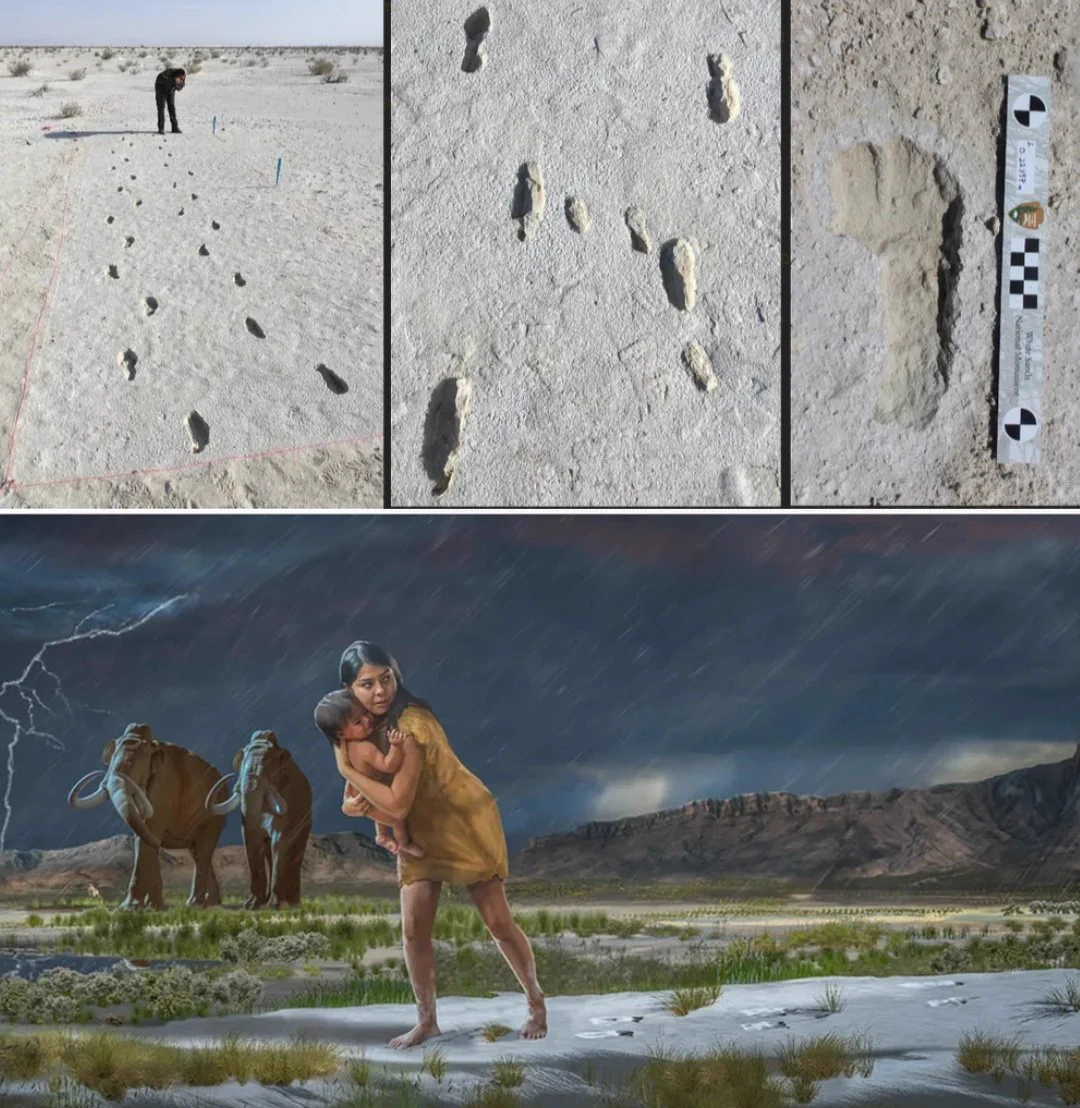
Lascaux Cave - the Sistine Chapel of the Paleolithic Period : Lascaux Cave is a Palaeolithic cave situated in southwestern France, near village of Montignac in Dordogne region, which houses some of most famous examples of prehistoric cave paintings... Close to 600 paintings – mostly of animals - dot the interior walls of the cave in impressive compositions. Horses are the most numerous, but deer, aurochs, ibex, bison, and even some felines can also be found. Besides these paintings, which represent most of the major images, there are also around 1400 engravings of a similar order. The art, dated to 17000-15000 BC, falls within the Upper Palaeolithic period and was created by the clearly skilled hands of humans living in the area at that time. The region seems to be a hotspot; many beautifully decorated caves have been discovered there. Exact meaning of the paintings at Lascaux or any of the other sites is still subject to discussion, but the prevailing view attaches a ritualistic or even spiritual component to them, hinting at the sophistication of their creators. Lascaux was added to the UNESCO World Heritage Sites list in 1979, along with other prehistoric sites in its proximity. Art at Lascaux was both painted on and engraved into the uneven walls of the cave, artists working with edges and curves of the walls to enhance their compositions. Resulting impressive displays depict mainly animals, but also a significant amount of abstract symbols, and even a human. Of the animals, horses dominate the imagery, followed by deer and aurochs, and then ibex and bison. A few carnivores, such as lions and bears, are also present. The archaeological record of the area shows that the depicted animals reflect the fauna that was known to these Palaeolithic humans. The entrance of the cave leads away from the daylight and straight into the main chamber of the cave, the Hall of the Bulls. Aptly named, this space contains mostly aurochs, a now-extinct type of large cattle. In a round dance, four large bulls tower above fleeing horses and deer, the relief of the walls serving to emphasise certain parts of the paintings. The animals are shown in side-view, but with their horns turned, giving the paintings a liveliness indicative of great skill. So far, these animals are easily identifiable, but others are less clear-cut. Seemingly pregnant horse with what looks like one horn on its head. Another mysterious figure is depicted with panther skin, a deer's tail, a bison's hump, two horns and a male member. Creative minds have suggested it may be a sorcerer or wizard, but what it really represents is hard to determine. Beyond the Hall of the Bulls lies Axial Gallery, a dead-end passage, but a spectacular one at that. It has been dubbed the 'Sistine Chapel of Prehistory,' as its ceiling is home to several eye-catching compositions. Red aurochs stand with their heads forming a circle, while the main figures of Gallery stand opposite one another: a mighty black bull on one side, a female aurochs on the other, seemingly jumping onto some sort of lattice that has been drawn underneath her hooves. There are horses in many shapes, including one known as 'Chinese horse,' with its hooves depicted slightly to the back, demonstrating a use of perspective far ahead of its time. Towards the back of the passage, a horse gallops with its mane blowing in the wind while its companion falls over with legs in the air. Original cave was closed to public in 1963 CE, after it became clear that many visitors caused, among others, growth of algae on cave walls, dealing irreparable damage to the paintings. Despite closure, fungi have spread within cave, and efforts to control these issues and protect art are ongoing. Those looking for an alternative experience can visit Lascaux II, a replica of Great Hall of Bulls and Painted Gallery sections, which was opened in 1983 CE and is located a mere 200m from original cave. 🎥 : Credit to the Owner #archaeohistories#
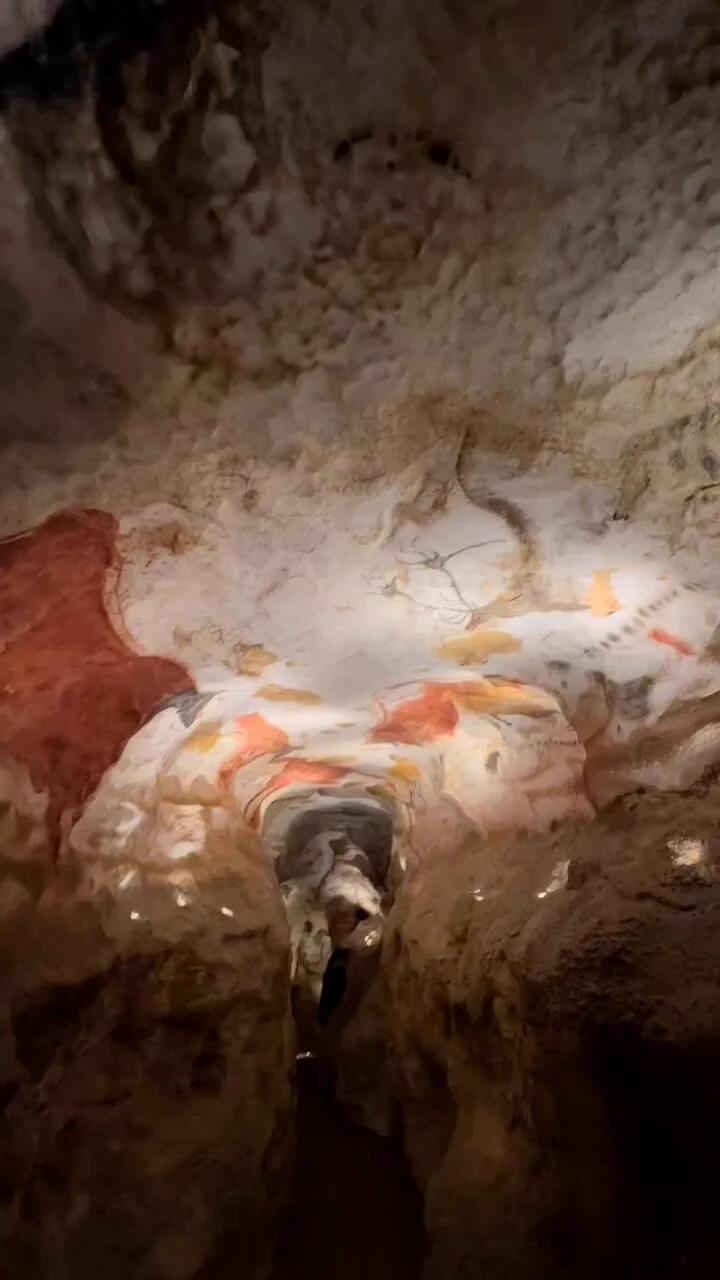
Durvillaea antarctica, also known as cochayuyo and rimurapa. This isn't just your run-of-the-mill seaweed, my friend. Oh no, it's a large, robust species of southern bull kelp that calls the coasts of Chile, southern New Zealand, and Macquarie Island its home. And when I say "large," I mean it can grow up to 1,000 cm in length. Talk about a sea giant! But wait, there's more! This marine marvel doesn't use air bladders to stay afloat like most of its algae brethren. Instead, it relies on a unique honeycomb structure within its blades to avoid being damaged by strong waves. It's like the Hulk of the kelp world, but instead of smashing things, it floats gracefully. And let's not forget its historical significance. Archaeologists found dried remains of Durvillaea antarctica in 14,000-year-old hearths at Monte Verde, suggesting that early communities used this protein-heavy plant as a dietary staple. So, the next time you're chowing down on your favorite seaweed salad, remember that you're partaking in a culinary tradition that's been around for longer than recorded history. But Durvillaea antarctica isn't just a delicious treat. It's also recognized worldwide for its high nutritional value in protein, vitamins, minerals, and dietary fiber. So, it's not just good for the palate, but also for your overall health. It's like nature's multivitamin, but with a side of ocean breeze.
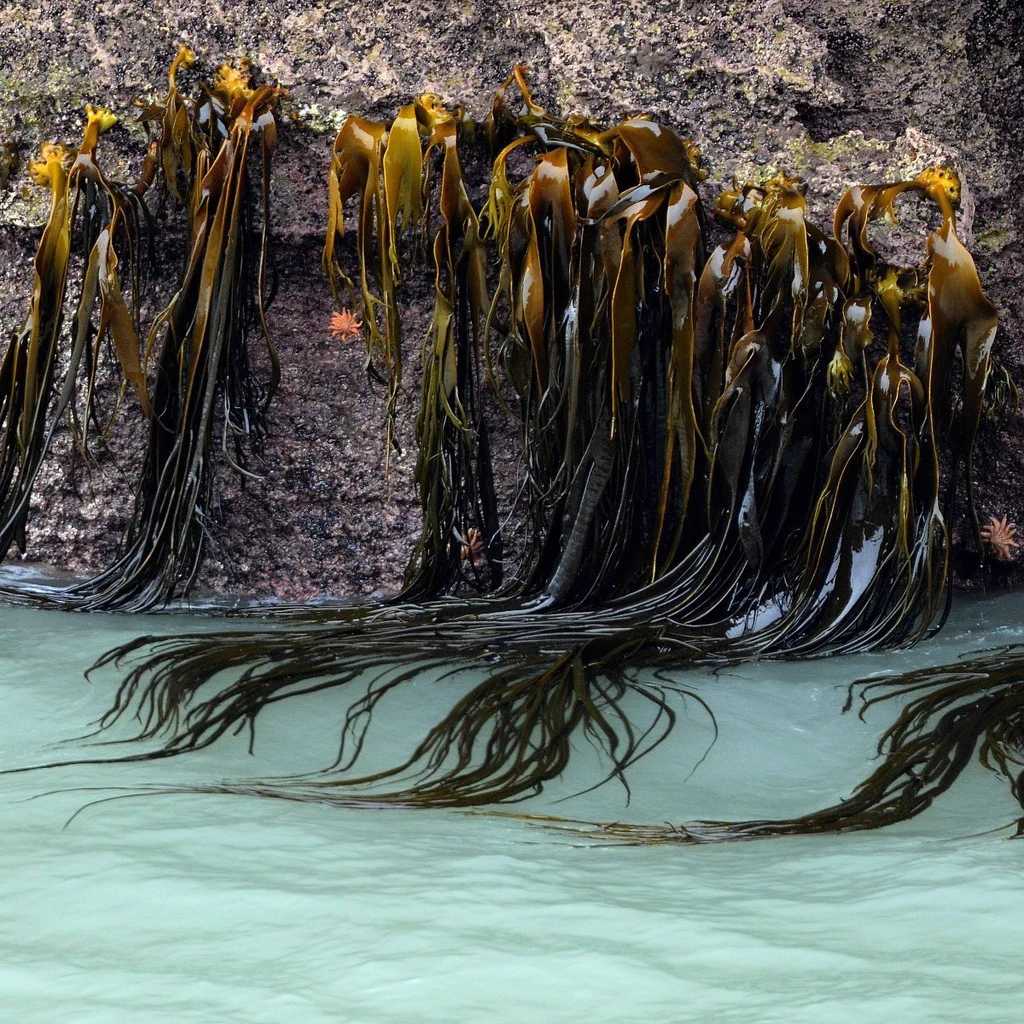
An ancient marble head of a classical goddess, defaced and carved with a Christian cross around the year 500 AD, Archaeological Museum of Samos.
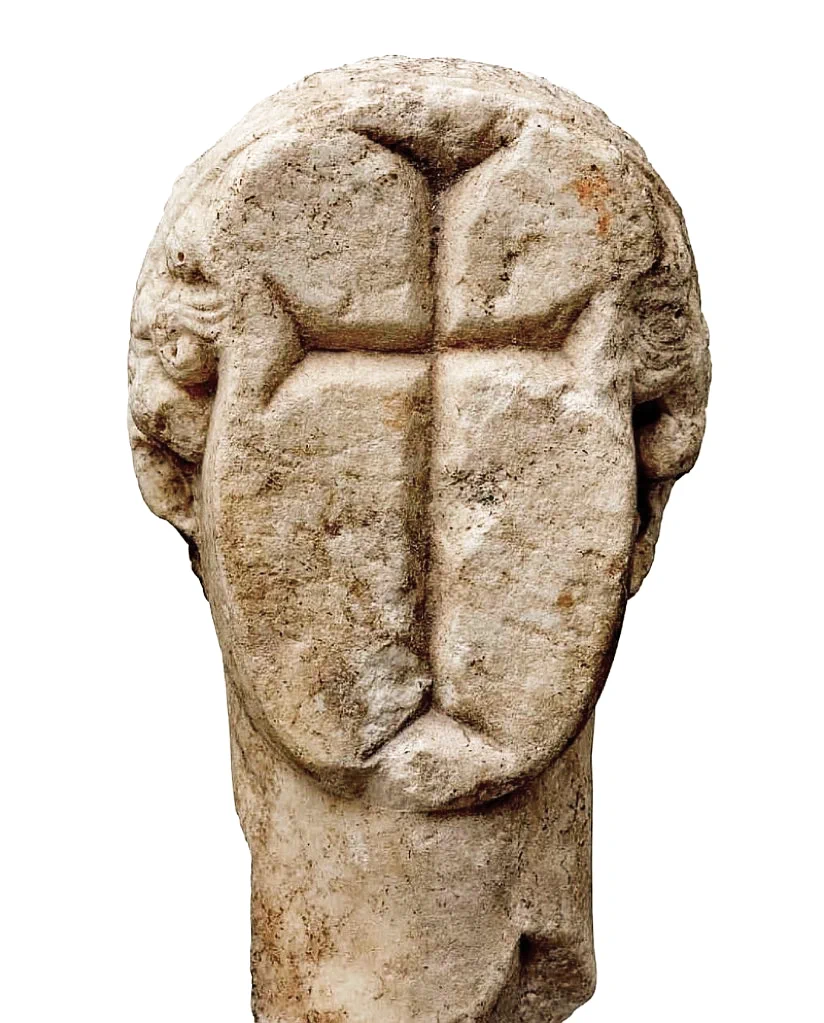
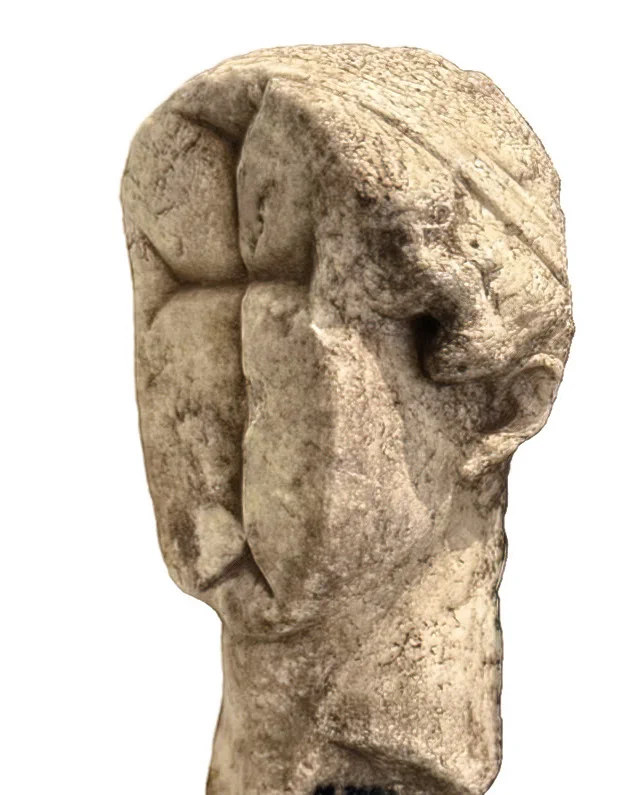
The entrance to the Great Pyramid of Giza, also known as the Pyramid of Khufu or Cheops, is one of the most iconic features of this ancient structure... The Great Pyramid of Giza stands as a testament to the architectural brilliance and engineering skills of ancient Egypt. Constructed during the reign of Pharaoh Khufu around 2560 BC, this magnificent structure is the largest of the three pyramids on the Giza Plateau and one of the Seven Wonders of the Ancient World. Rising to an original height of nearly 147m, its construction involved the labor of thousands of workers over a span of about 20 years. Composed of an estimated 2.3 million blocks of limestone and granite, its precise alignment and complex internal passageways have intrigued historians and archaeologists for centuries. The Great Pyramid continues to captivate the imagination of people around the world, symbolizing the rich history and enduring legacy of ancient Egyptian civilization. The original entrance was located on the northern face of the pyramid, approximately 17m above the base. This entrance was designed as a narrow passage leading into the internal corridors and chambers of the pyramid. It is believed to have been carefully sealed after the pyramid's completion to protect the burial chamber and its treasures. In modern times, visitors do not use the original entrance. Instead, they access the pyramid through what is known as the Robbers' Tunnel, an alternate passageway created around 9th Century AD, during an attempt to uncover its secrets. This tunnel bypasses much of the original design and provides entry to the Grand Gallery and the King's Chamber. The original entrance and its placement were part of the precise architectural planning that has amazed historians and archaeologists for centuries. The Great Pyramid's design, including its intricate internal passages, remains a subject of wonder, symbolizing the incredible ingenuity of ancient Egyptian engineering. #archaeohistories#
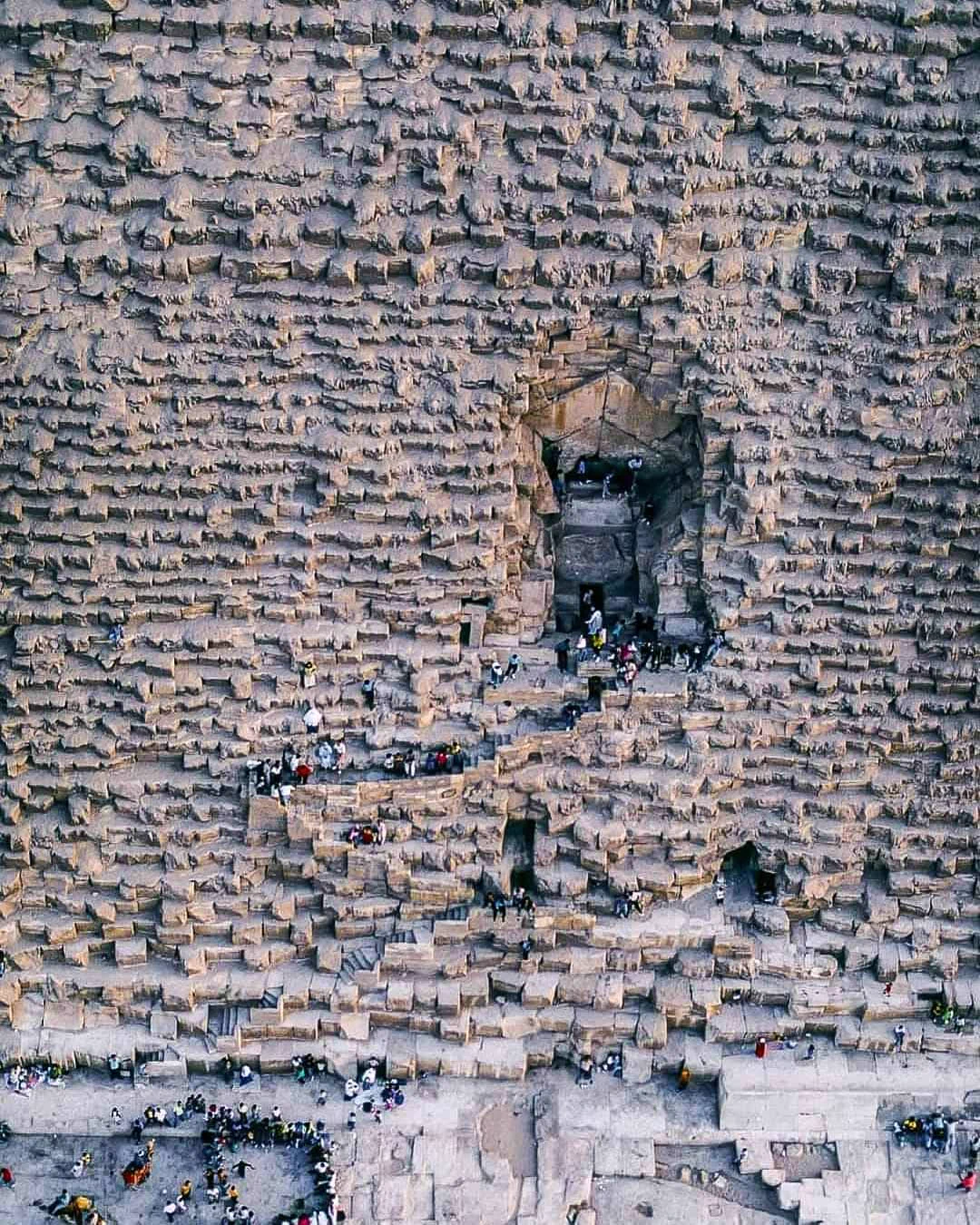
Art Deco malachite glass bottle designed by Henry Schlevogt under the Ingrid Brand, Czechoslovakia, early 20th century.
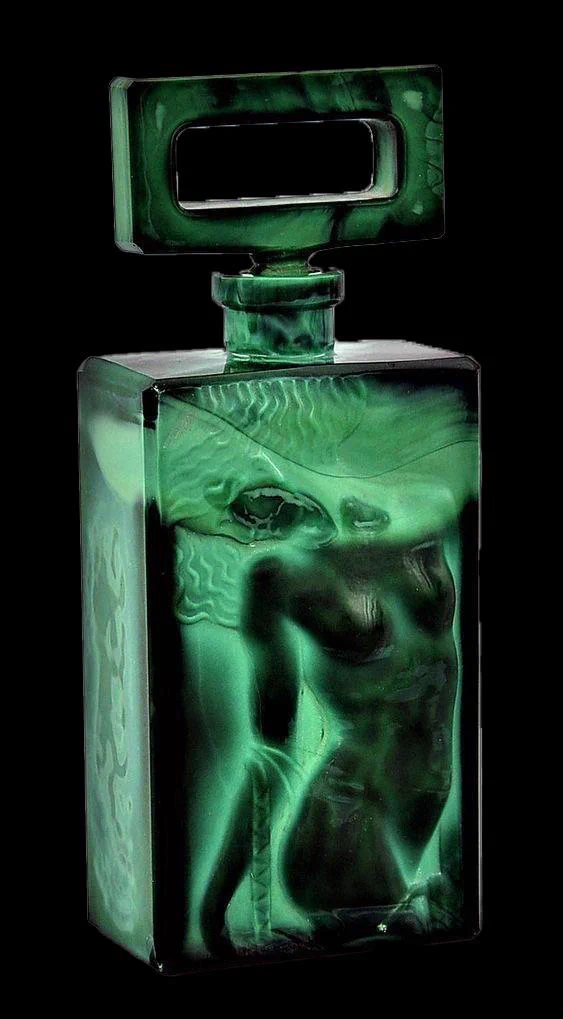
Female figurine from Guerrero, Mexico, Xalitla region, crafted in the Xochipala style, dating from approximately 1500–500 BC, made of earthenware with pigment decoration. Collection & Credit: The Getty.
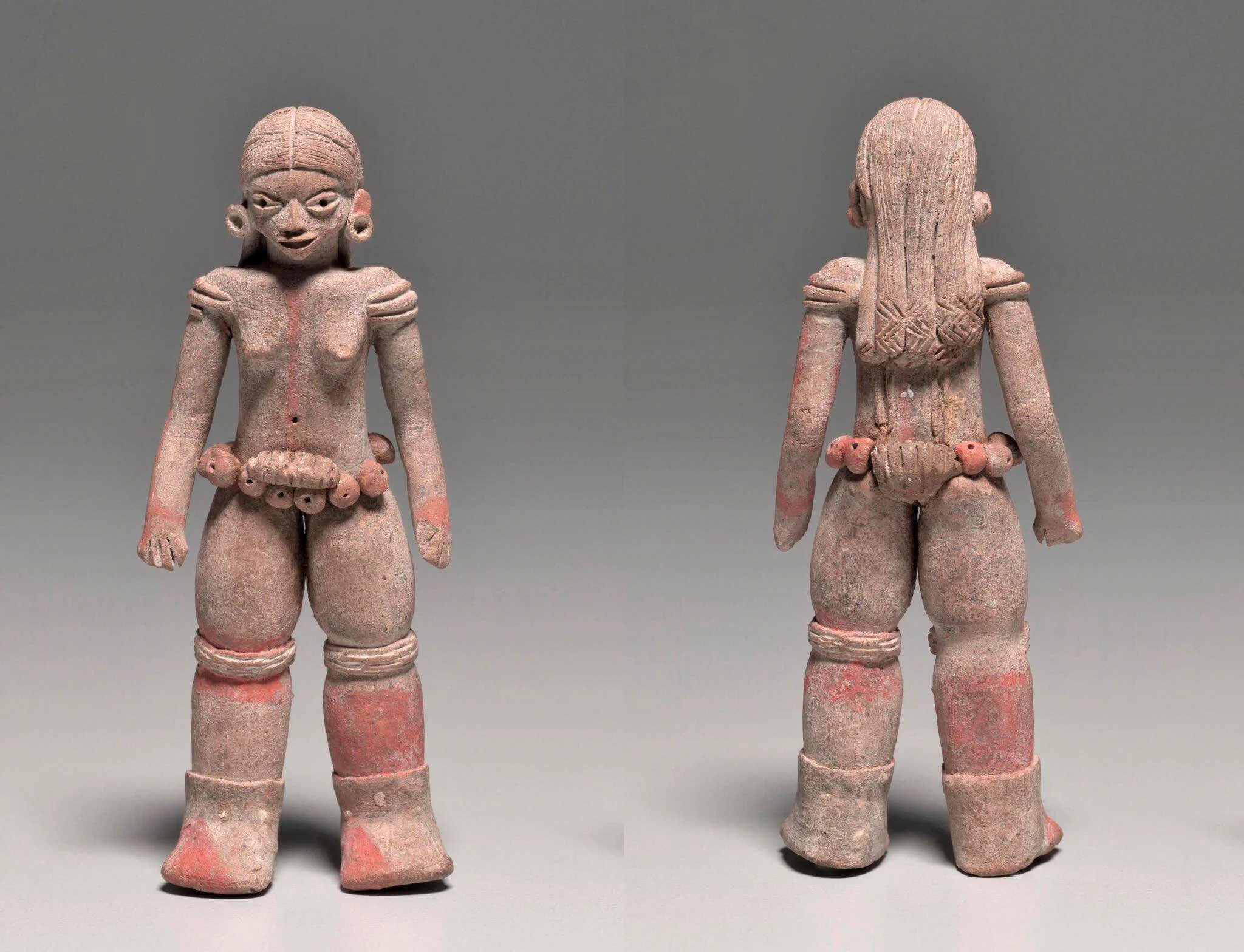
Bronze and glass sculpture titled "Naissance Rose," created by French artist Arman (Armand Pierre Fernandes, 1928-2005). Signed on glass. Credit: Abington Auction Gallery, Inc.
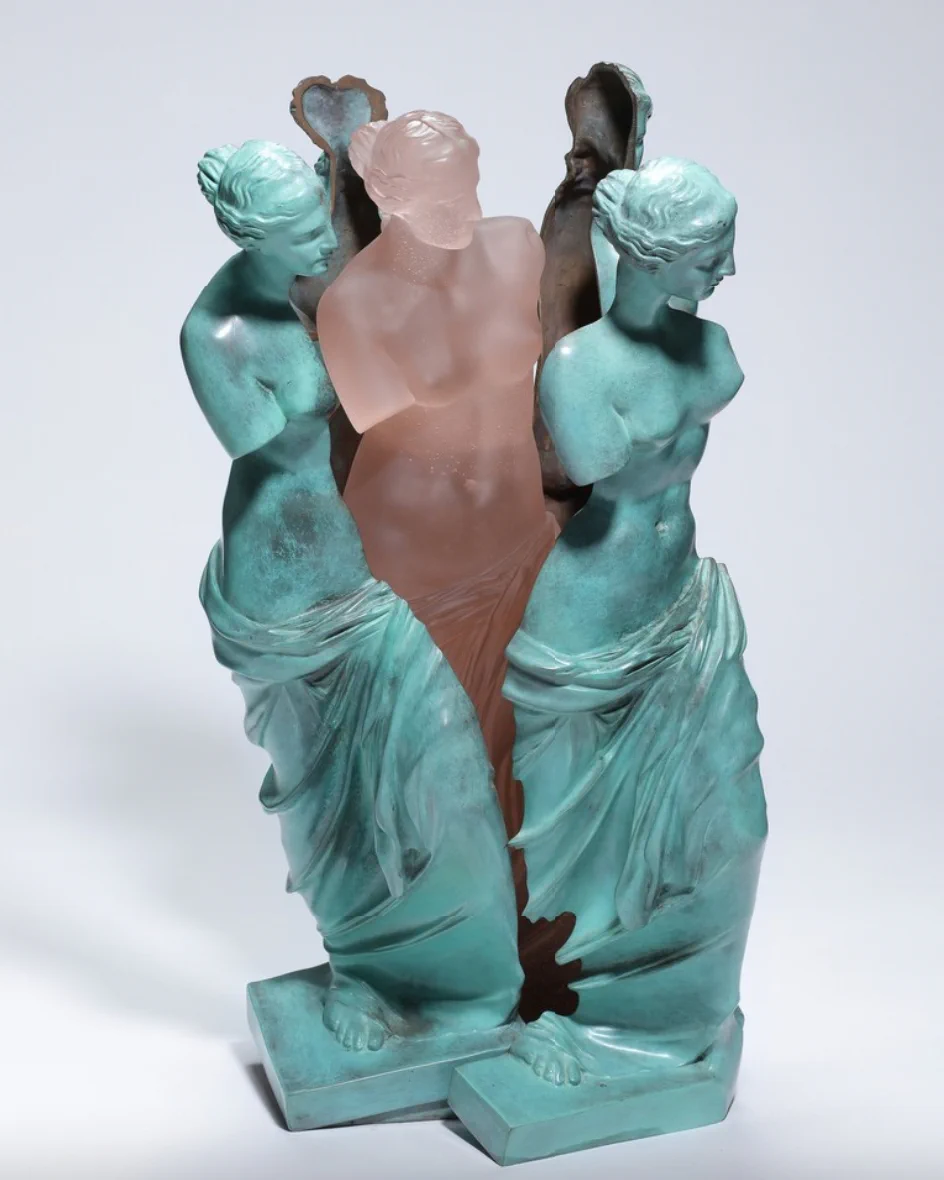
Ancient Greek helmets from the classical period kept in the storeroom of the Archaeological Museum of Olympia in Greece. #drthehistories#
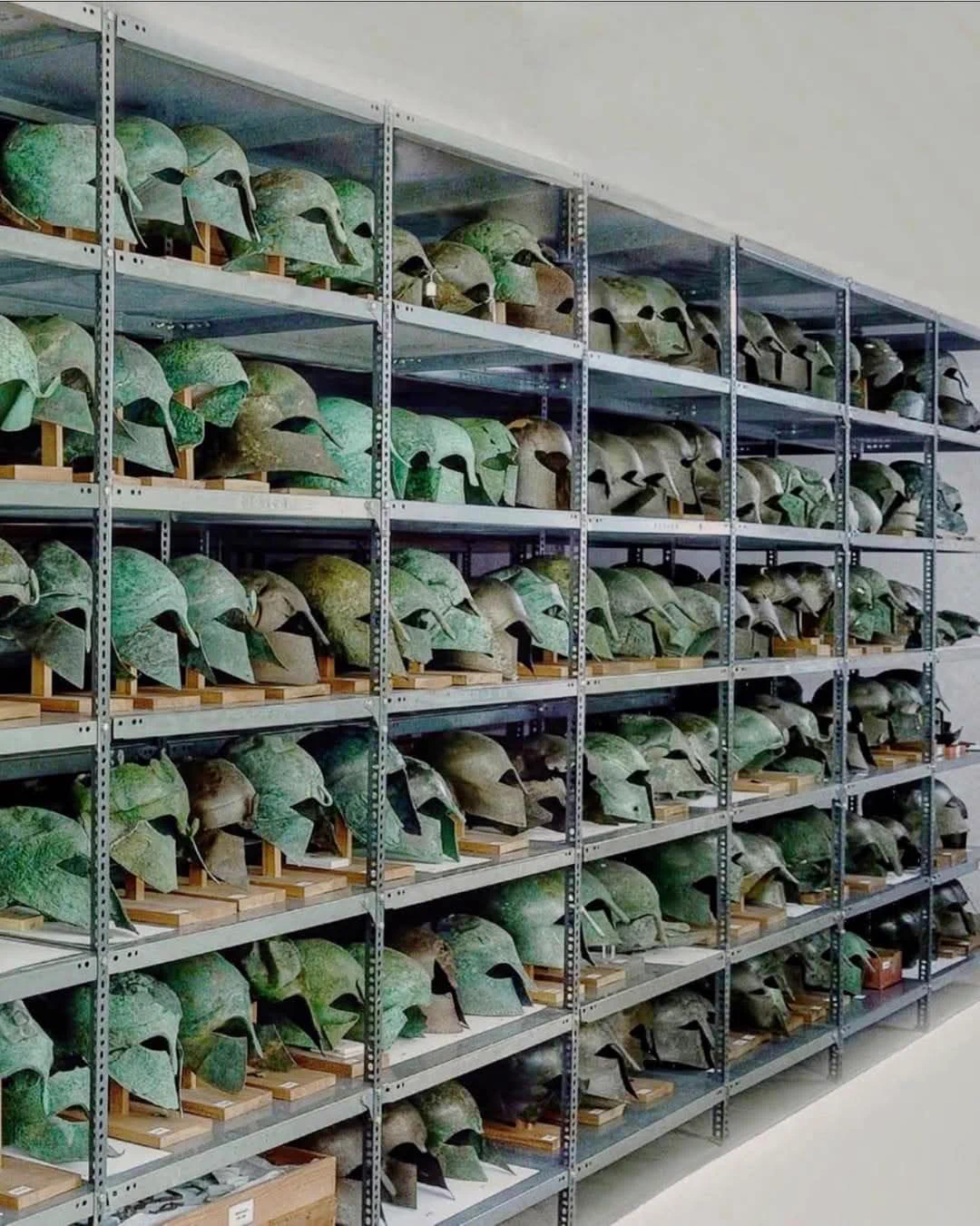
Illustration of a rabbit riding a snail, from an Armorial manuscript, created in the Netherlands, c. 1650. Collection: Biblioteca Apostolica Vaticana, Chig.G.IV.113, fol. 120v.
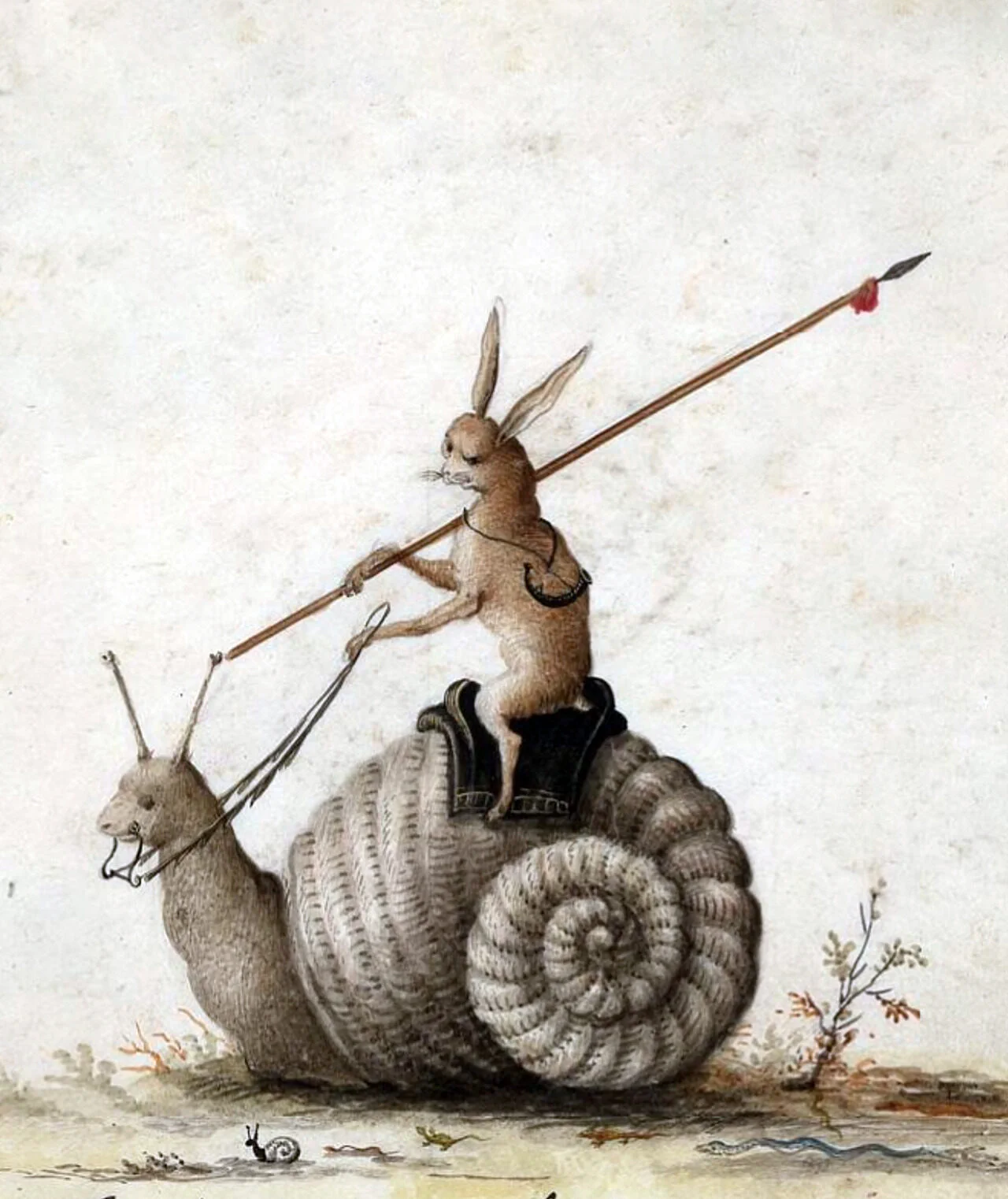
Colossal Buddha statue carved from sandstone, located in Bamiyan, Afghanistan, photographed in 1928. Photo from National Institute of Informatics.
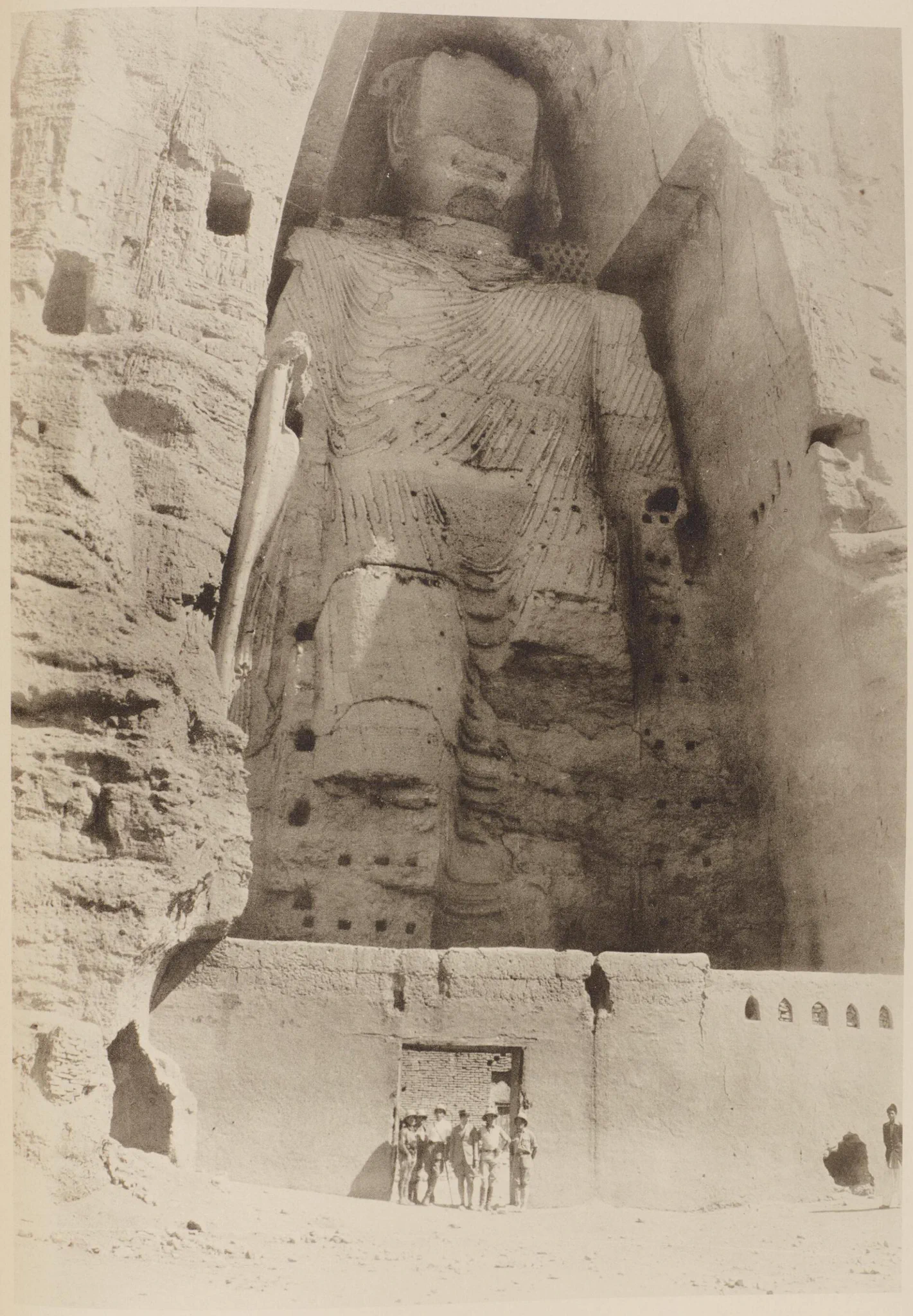
"Rabbit and Crocodiles" by Nishino Yoichi (1954 - ) Nishino Yoichi, born in 1954, is a contemporary Japanese painter renowned for his skillful integration of traditional Nihonga (Japanese-style painting) techniques with modern thematic expressions. Nihonga emerged in the late 19th century during the Meiji period (1868-1912 AD) as artists sought to preserve and evolve classical Japanese artistic traditions in response to Western influences.
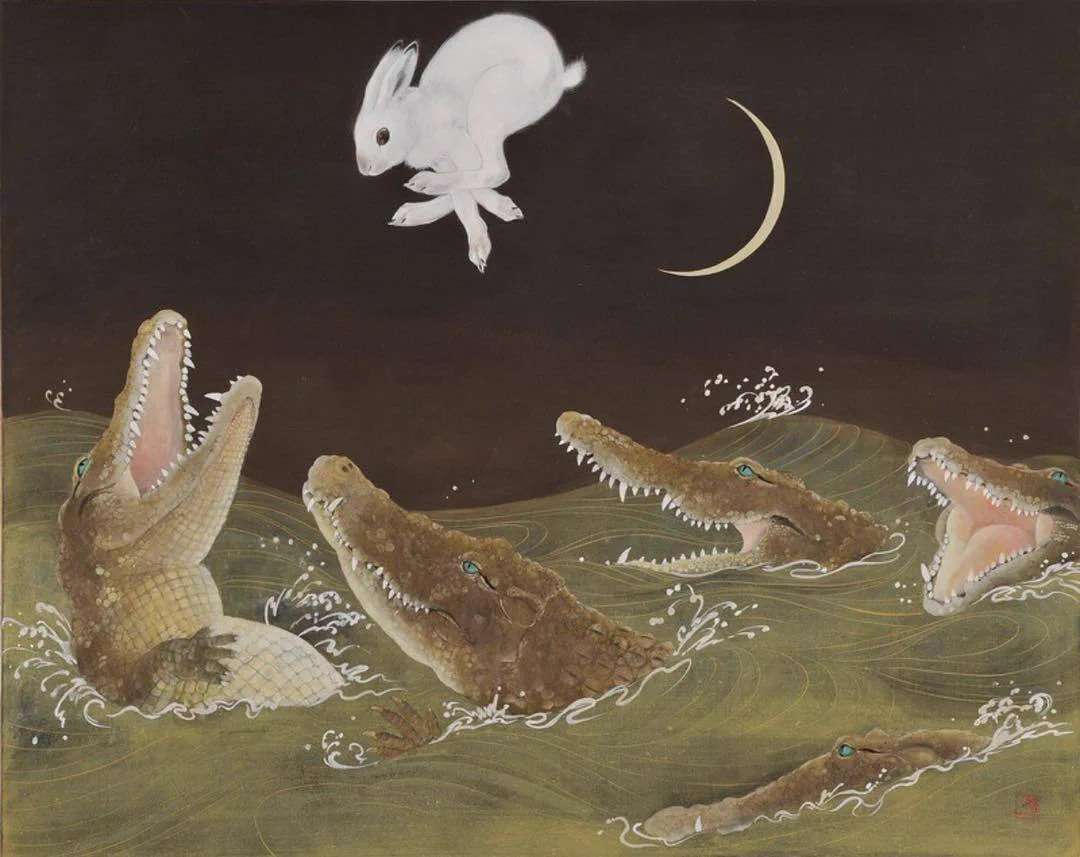
"The Mermaid’s Rock," oil painting by Edward Matthew Hale, 1894.

Turtle group, small sculpture; Culture: Japanese, Edo period; place of origin: Japan; early to mid–19th century AD; artist: Ryōichi (or Yoshikazu).
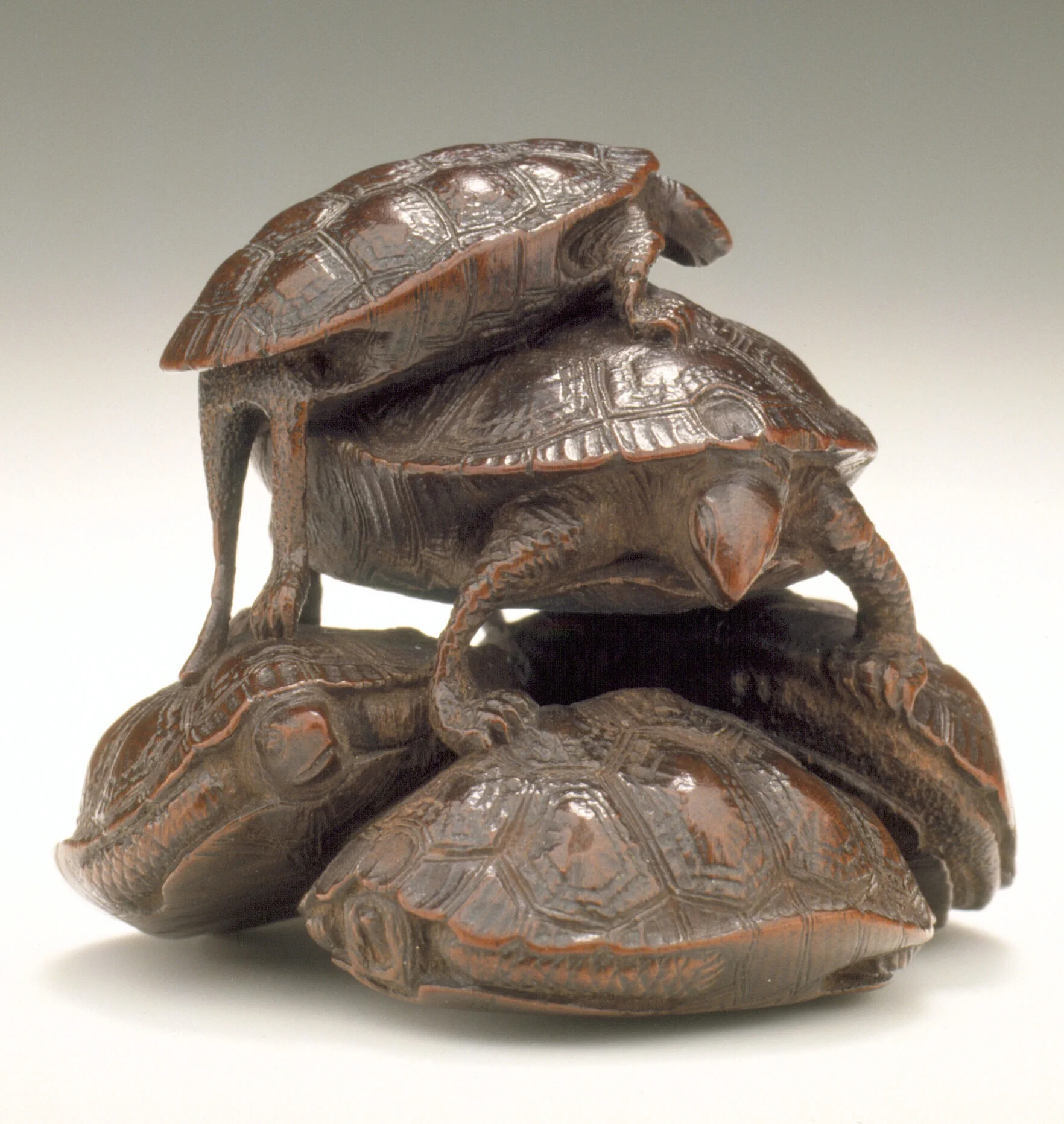
Lioness Devouring an African (Phoenician culture), ivory with gold leaf, carnelian and lapis lazuli inlay, c. 900–700 BC. Collection: The British Museum, London.
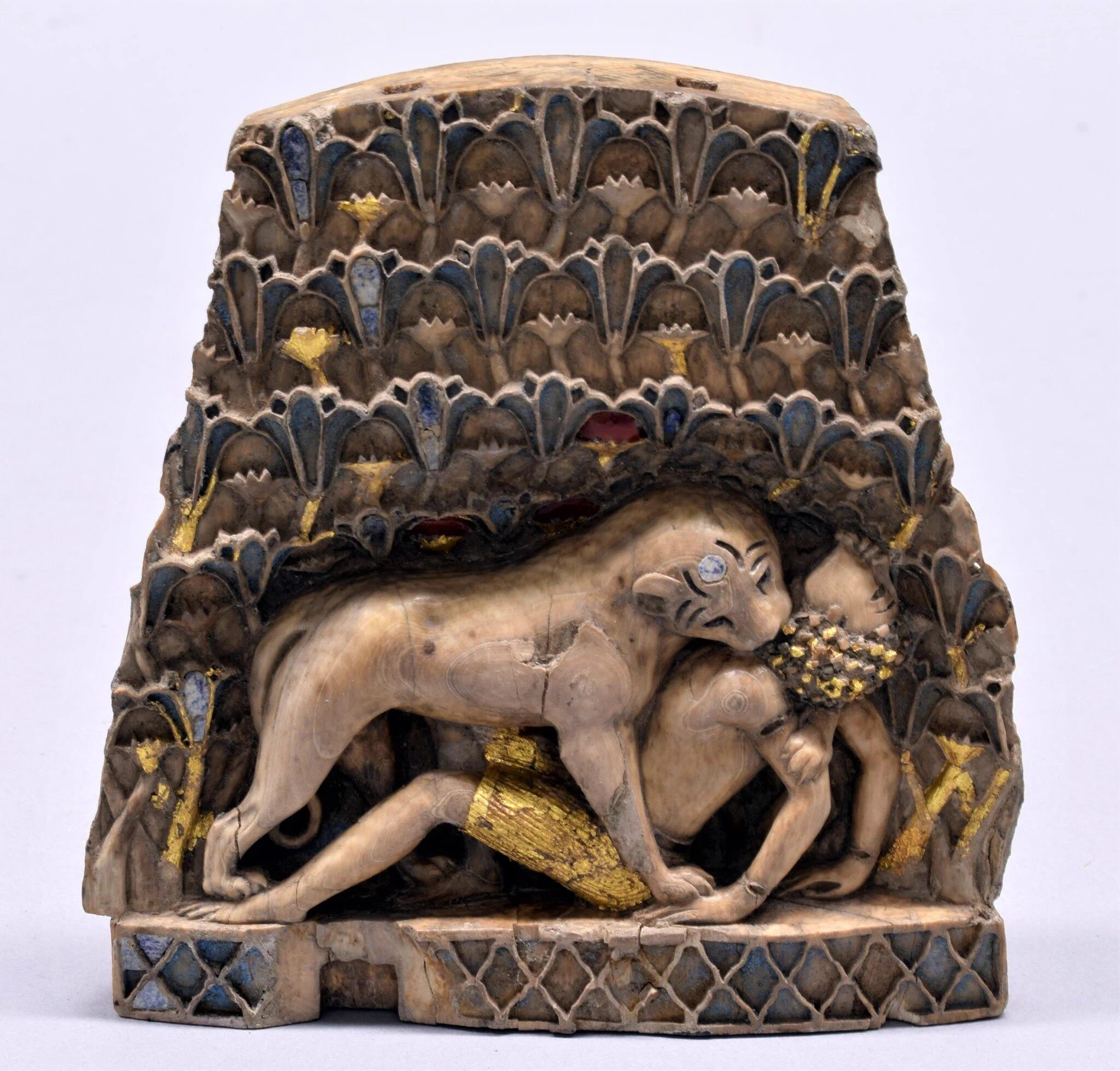
Romulus and Remus. Artist: Alexander Novoselov (b. 1980). Medium: oil on canvas.
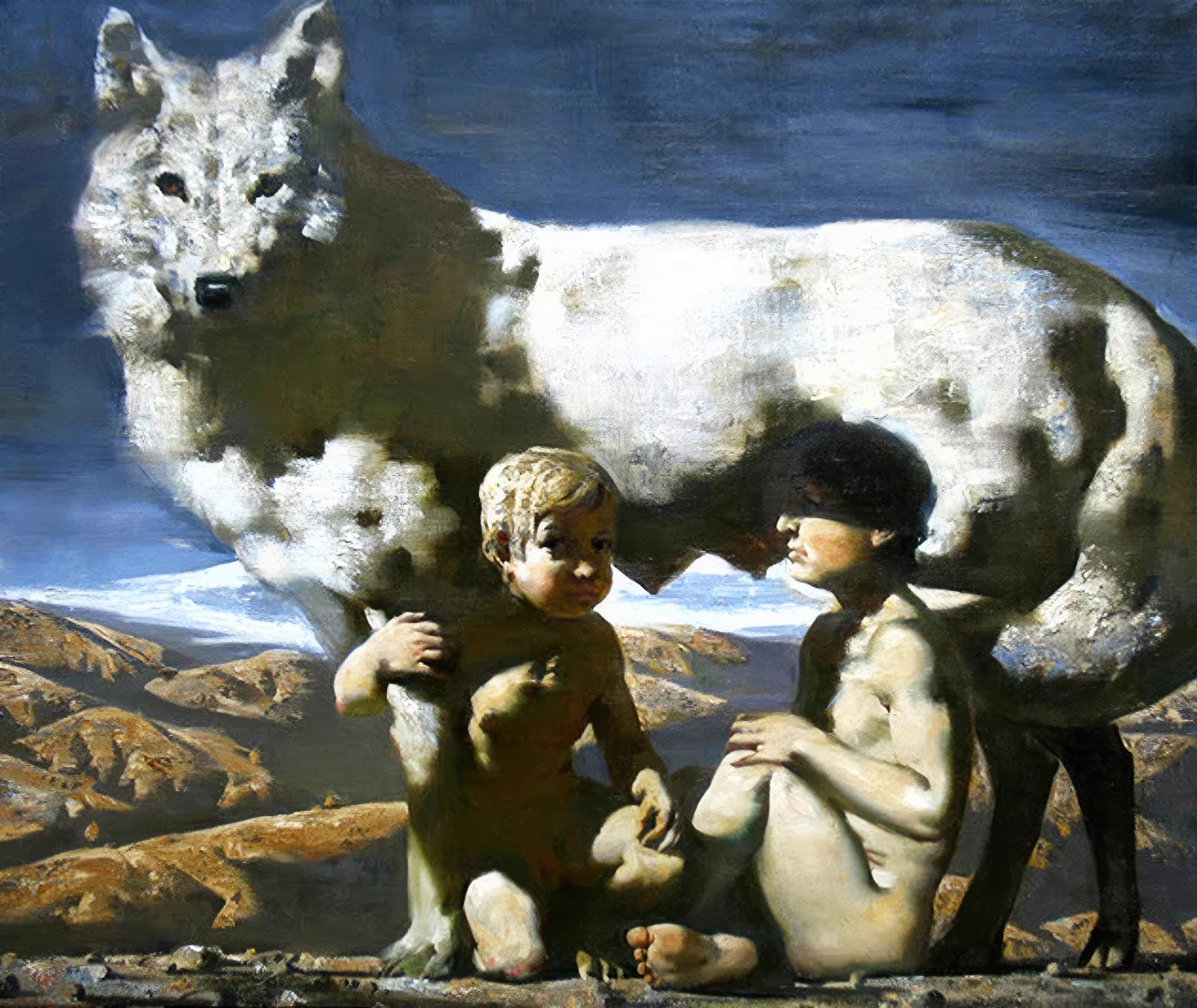
Memento mori skull watch, known as the “Mary, Queen of Scots” watch. Place of origin: Blois, France. Date: c. 1780–1850 AD; movement signed “Moysant, Blois.” Medium: engraved and pierced silver; the jaw lifts to reveal the dial. Collection: The Worshipful Company of Clockmakers. Now on display at the Clockmakers’ Museum, Science Museum, London.
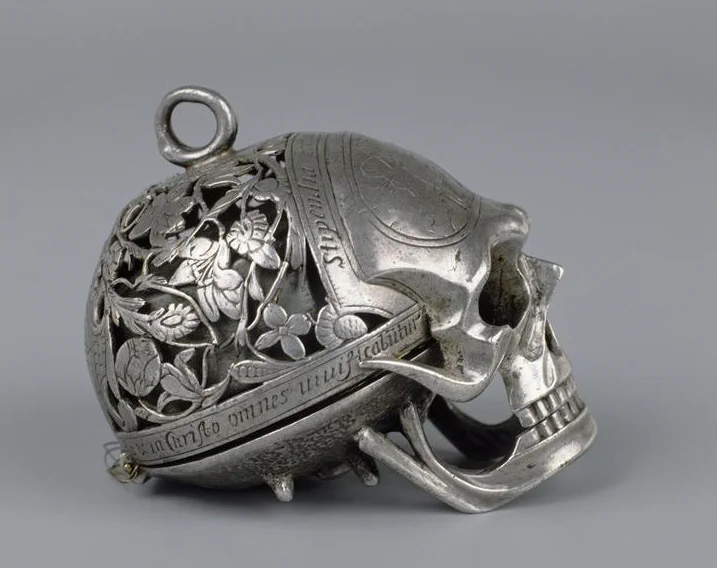
Tiger Attacking a Calf (opus sectile panel). Culture: Roman Empire, Late Antique. Date: c. 4th century AD. Medium: opus sectile in polychrome marbles and stones. Collection: Capitoline Museums, Rome. Photographer: © William Perry | Dreamstime.







